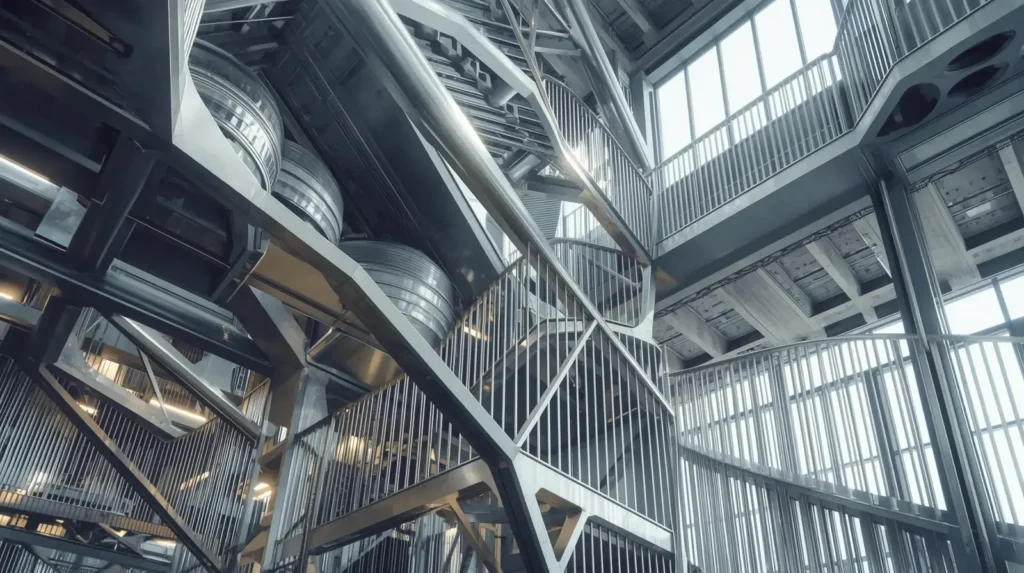Steel is one of the most vital materials in human civilization. It is not just a metal but the backbone of modern infrastructure, industry, and technology. From skyscrapers that touch the clouds to the cars we drive, from surgical instruments that save lives to the bridges that connect cities, steel is everywhere. Its strength, durability, versatility, and recyclability make it one of the most valuable resources known to humankind.
The word steel refers to an alloy of iron and carbon, where carbon usually ranges from 0.02% to 2% of the composition. While iron by itself is relatively soft, the addition of carbon strengthens it immensely. Over centuries, humans discovered not only how to produce steel but also how to refine it for different applications. The journey of steel runs parallel to the journey of human progress.
This essay will explore steel’s history, production processes, types, uses, economic importance, environmental impact, and future role. By doing so, it will show why steel is often described as the “spine of modern civilization.”
The History of Steel
Early Discoveries
The roots of steel go back thousands of years. Around 1800 BCE, in Anatolia (modern-day Turkey), blacksmiths began experimenting with iron ore. By mixing it with carbon from charcoal, they unknowingly produced primitive steel. Over time, this knowledge spread to other parts of the world.
In ancient India, a special high-quality steel known as wootz steel was produced. Wootz steel became famous for its durability and sharpness, and it was exported across Asia and Europe. The legendary Damascus steel swords, admired for their strength and unique patterns, were made using wootz steel.
Steel in Antiquity and the Middle Ages
The Romans were among the first to use steel widely, employing it in weapons, tools, and construction. However, steel was still rare and expensive due to the lack of efficient production methods.
During the Middle Ages, steel became central in the making of swords, armor, and agricultural tools. Yet, large-scale production was still not possible, and most steel was created in small forges.
The Industrial Revolution and the Bessemer Process
The true turning point came in the 19th century. In 1856, Henry Bessemer, an English inventor, introduced the Bessemer process, a method for mass-producing steel by blowing air through molten pig iron to remove impurities. This process drastically reduced the cost and increased the speed of steel production.
Soon after, the open-hearth furnace and later the basic oxygen process improved steelmaking further. This revolutionized industries, allowing the construction of railways, bridges, ships, and later, skyscrapers. Steel became the symbol of the Industrial Revolution and modernity itself.
The Science and Production of Steel
Raw Materials
The main ingredients for steel production are:
- Iron Ore – The primary source of iron.
- Coke – A form of carbon derived from coal.
- Limestone – Used to remove impurities during smelting.
The Blast Furnace
Most steel begins its life in a blast furnace. Iron ore, coke, and limestone are loaded into the furnace, where extremely high temperatures melt the iron. Impurities form slag, which floats on the molten iron and is removed.
Refining and Alloying
Once pig iron is obtained, it is refined into steel by reducing carbon and adding other elements like chromium, nickel, manganese, or vanadium. This alloying gives steel different properties—hardness, resistance to corrosion, or flexibility.
Modern Processes
- Basic Oxygen Steelmaking (BOS): Uses pure oxygen to reduce carbon content quickly.
- Electric Arc Furnace (EAF): Uses electricity to melt scrap steel and recycle it.
- Continuous Casting: Shapes steel directly into slabs, billets, or blooms for further processing.
Types of Steel
Steel is not a single material but a family of alloys. Each type serves a different purpose:
- Carbon Steel – The most common type, used in construction, pipelines, and tools.
- Alloy Steel – Contains elements like nickel, chromium, or vanadium for specialized properties.
- Stainless Steel – Contains at least 10% chromium, making it resistant to rust; used in cutlery, medical tools, and architecture.
- Tool Steel – Designed for strength and durability, used in cutting and drilling.
- Structural Steel – Specially shaped steel beams and bars used in buildings and bridges.
Uses of Steel
Steel is everywhere in our lives. Its applications include:
- Construction: Skyscrapers, bridges, tunnels, and stadiums.
- Transportation: Cars, trains, airplanes, and ships.
- Energy: Oil rigs, wind turbines, and pipelines.
- Household Items: Cookware, furniture, and appliances.
- Medicine: Surgical instruments and hospital equipment.
- Defense: Tanks, submarines, and aircraft carriers.
Steel is truly a universal material, supporting nearly every modern industry.
Economic Importance of Steel
Steel is a pillar of the global economy. The steel industry provides millions of jobs worldwide, from mining and production to engineering and construction. Countries like China, India, Japan, the United States, and Russia are among the largest producers.
Steel also drives industrialization. A country’s steel output is often seen as a measure of its economic power. For example, China’s rapid growth in the 21st century was supported by its booming steel industry, which supplied infrastructure and exports.
Environmental Impact of Steel
Despite its benefits, steel production has a heavy environmental footprint. Blast furnaces release significant amounts of carbon dioxide (CO₂), contributing to climate change. Mining iron ore also disrupts ecosystems and landscapes.
However, steel is highly recyclable. Unlike many materials, steel can be recycled indefinitely without losing quality. This makes it one of the most sustainable industrial materials. The shift toward electric arc furnaces powered by renewable energy further reduces emissions. The industry is also investing in “green steel,” produced using hydrogen instead of coal.
Steel and Human Civilization
Steel has shaped human history like few other materials. It enabled railways that connected nations, ships that explored oceans, and weapons that defended empires. It built the skylines of New York, Dubai, and Shanghai. Even in the digital age, steel remains essential—data centers, smartphones, and satellites all depend on steel in their infrastructure.
Steel is not just a metal; it is a symbol of strength, progress, and resilience. It reflects humanity’s ability to transform natural resources into tools of innovation and survival.
The Future of Steel
The future of steel will be shaped by three main forces:
- Sustainability: Developing eco-friendly “green steel” to combat climate change.
- Technology: Advanced manufacturing like 3D-printed steel structures and nano-alloys.
- Global Demand: Rising populations and urbanization in Africa and Asia will increase steel consumption.
Steel will continue to evolve, but it will remain central to human progress.
Conclusion
Steel is more than a material—it is the foundation of modern life. Its history stretches from ancient forges to modern skyscrapers, its science blends chemistry with engineering, and its presence is felt in every corner of society.
Without steel, modern civilization would not exist. It has given us the tools to build, explore, and connect. Though challenges like environmental impact remain, innovations in recycling and green production promise a sustainable future.
In essence, steel is the silent hero of human progress—strong, reliable, and enduring. As we step into the future, steel will continue to support dreams, strengthen societies, and shape the world.

